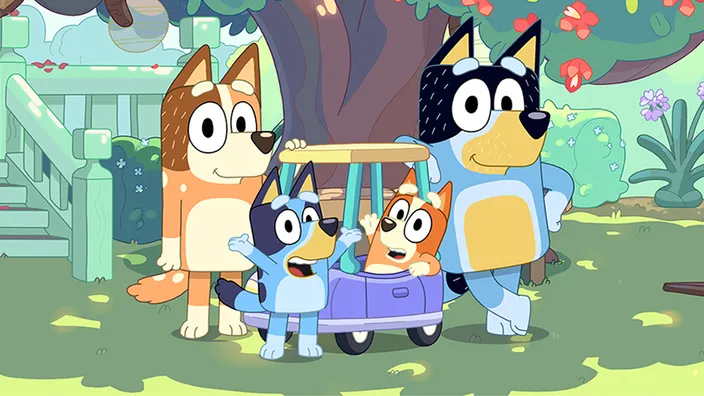They’re one of Australia’s most well-known families, and no, it’s not the Irwins; these clever canines’ names are less crocodile hunter and more heart-warmer!
Bluey is an Emmy® Award-winning Australian children’s show that depicts a six-year-old blue heeler (Australian cattle dog) and her family created by Ludo Studio.
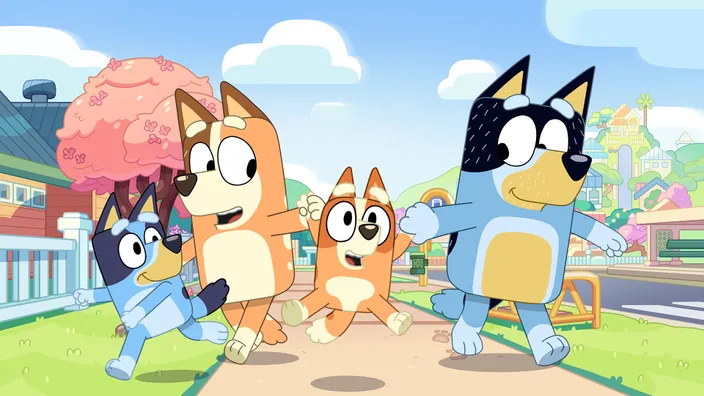
Since the first episode aired in 2018, the Bluey world, franchise and fandom has amassed a large following eager to see the Heeler family and their adventures.
While from the outset, the show appears targeted to an audience of Australian primary school students and preschoolers, publications like The Conversation suggest there is a large fan-base of adults who enjoy an episode or two.
But what is it about this show that resonates so deeply with audiences of all ages and demographics?
In part, a couple of reasons for the international success among the young and old alike appear to be the messaging within episodes, branding and accessibility of viewing.
A report from ACMA (The Australian Communications and Media Authority) found that 66 per cent of Australians watched content via an online streaming service and 52 per cent watched free-to-air television.
Bluey is available to watch free-to-air on ABC Kids and is streamable on a range of services including ABC iView, Disney, Apple TV, Foxtel and YouTube which when considering how we’re watching content, means the show is pretty accessible to the average Australian… and for people across the globe.
The success of the show cannot be understated with the longest Bluey episode to date ‘The Sign’ breaking iView records as the most viewed program of all time.
Additionally, on an international level, Bluey was the second most streamed show last year in the U.S. according to Nielsen Insights.
So lots of people are watching the show. Adults and children alike are hooked. It’s breaking records… What does this mean for popular culture and children’s television?
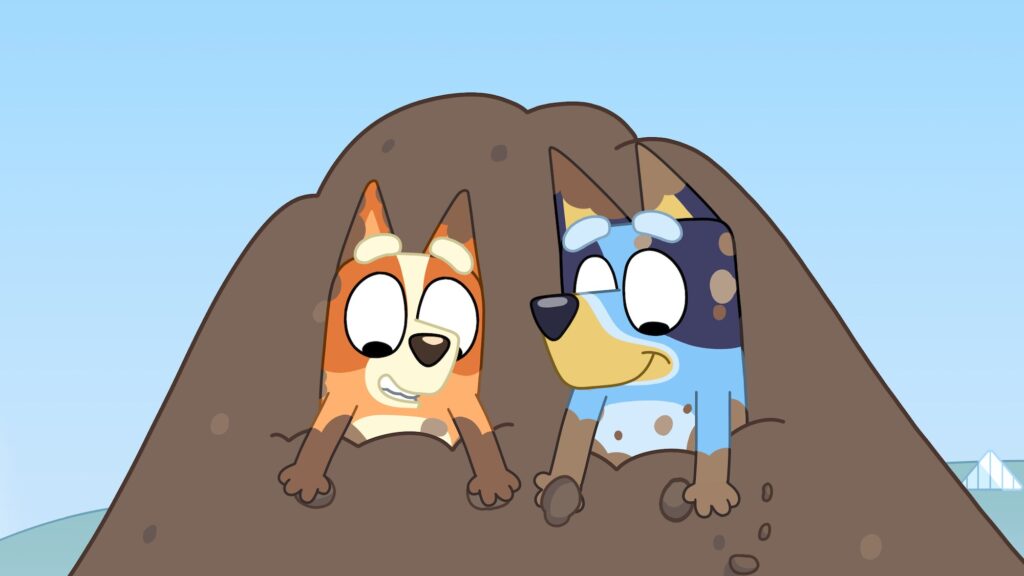
Shows like Bluey encourage imagination, creativity and play in young audiences, but the episodes often tackle challenging concepts and social issues in a bite-sized way that makes them easier to digest.
It’s this sensitivity that writer Joe Brumm and the team at Ludo Studios takes when writing and producing these episodes that leaves audiences with powerful takeaway messages about important topics and has spurred the popularity of discourse about the show on social media.
There is a certain amount of nostalgia that adult audiences also find within the Bluey.
According to the Australian Children’s Television Cultures’ research into long-term impacts of Aussie Kid’s TV for those in their 30s, Australian children’s show have become a means to make “treasured childhood memories” and “meaningful shared cultural experiences”.
This has a flow down effect to their children with many surveyed revisiting older programs they watched as children with their kids, but it also relates to gen z and millennials visiting shows like Bluey for that hit of nostalgia.
Bluey is not the only children’s entertainment that’s tackling tough topics and making us all weep to our screens at the moment either.
Disney Pixar’s Inside Out 2 hit cinemas on June 10 following the successful first Inside Out movie’s release in 2015.
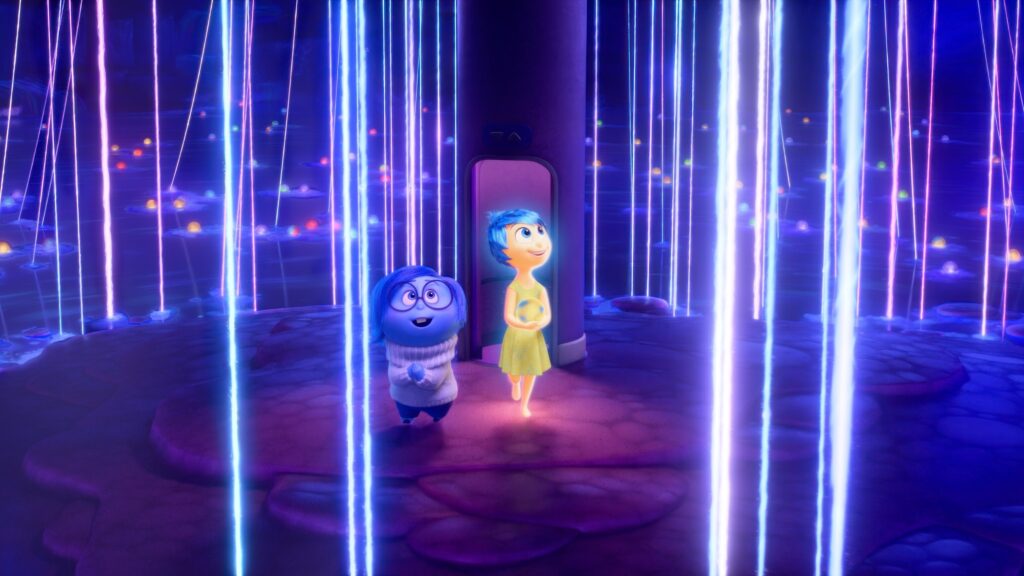
The first movie explored the emotions of a young girl, Riley, as she grew up and navigated childhood. The second movie sees new emotions Anxiety, Ennui, Embarrassment and Envy move into ‘headquarters’ and take control from the original five emotions Joy, Anger, Sadness, Fear and Disgust.
The movie provides a nuanced perspective on conflicting emotions and the development of one’s sense of self during adolescence while at its core remaining a magically, fun-loving and enjoyable show for children and adults alike.
Towards the end of Inside Out 2, Riley experiences what appears to be symptoms of an anxiety attack. Audiences see her navigate a racing heartbeat, difficulty thinking straight and laboured breathing.
Similarly, Bluey episodes such as ‘Onesies’ and ‘Flat pack’ explore concepts such as infertility, growing up and death.
Shows that unashamedly explore what it means to be human and experience the world in different ways are some of the things both Inside Out 2 and Bluey are getting right.
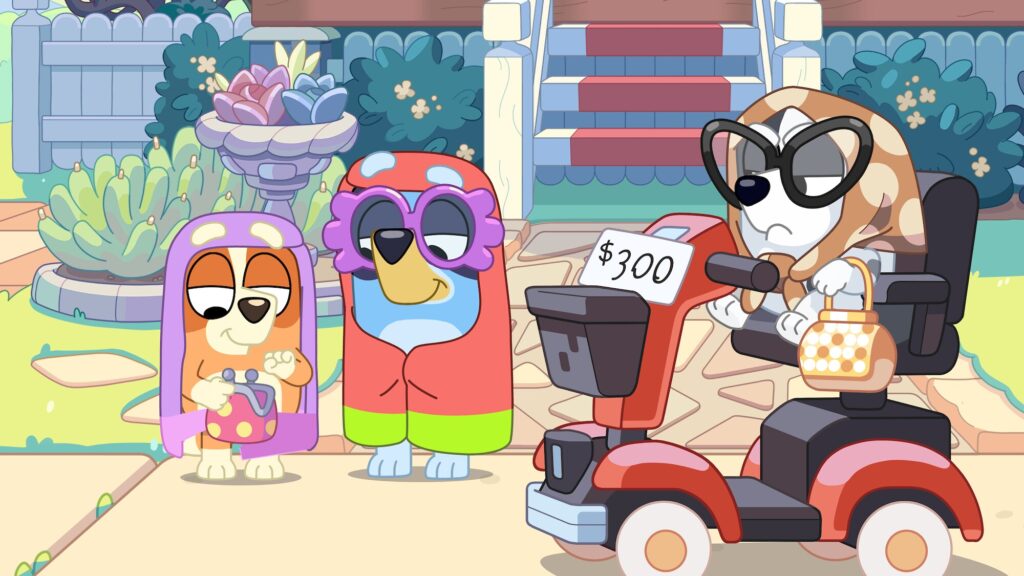
Aside from the emotional messaging and comparison to other shows, another consideration into the success and popularity of Bluey is the in real life presence of the branding. To put bluntly, it can feel a touch inescapable.
The exterior of six Australian and New Zealand Bunnings stores were taken over with the Bluey inspired branding, ‘Hammerbarn’, from season two.
Ludo Studio released a statement saying: “The design of Hammerbarn draws inspiration from the Bunnings Keperra store in Brisbane, the home of Bluey, which adds an extra layer of significance.”
In June this year, The Royal Australian Mint announced three versions of uncirculated Blue-inspired ‘Dollarbucks’ would be hitting the market each with a mintage of 30,000 coins.
The 2023 Myer Christmas windows featured a series of activities Bluey and her family get up to around the festive period alongside a pop-up exhibition experience on the top floor of the iconic Melbourne store.
The home of Bluey, Brisbane is set to feature the Bluey World Attraction later this year featuring sets from episodes for an immersive experience.
When considering the intertwining of all these factors and the work to create immersive experiences for fans, it makes sense that audiences are jumping on board.
Whatever way you look at it, we’re at an interesting crossroads in pop culture, particularly when considering Australian television.
By Louis Harrison
Header image via Ludo Studio

